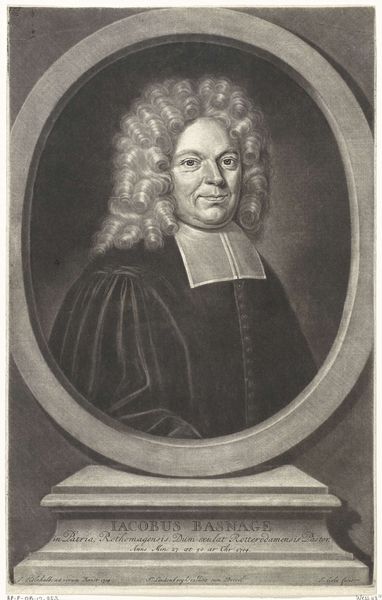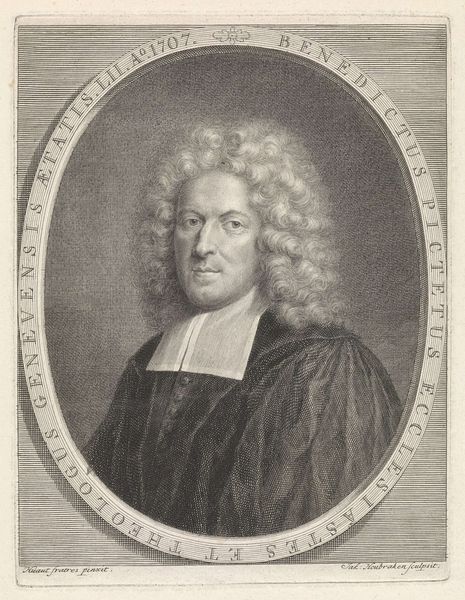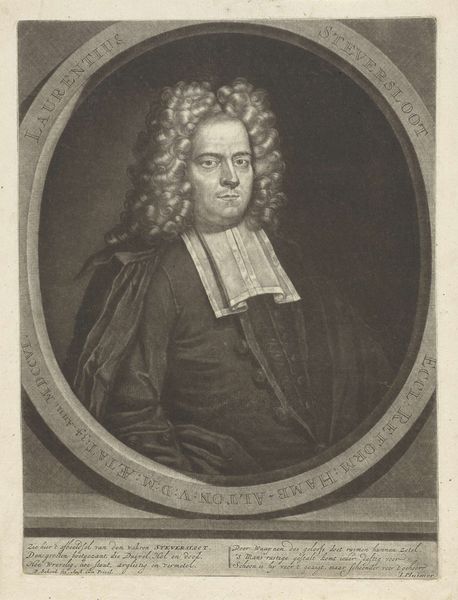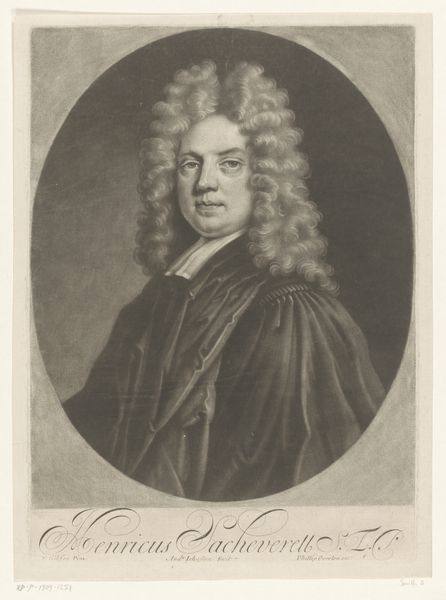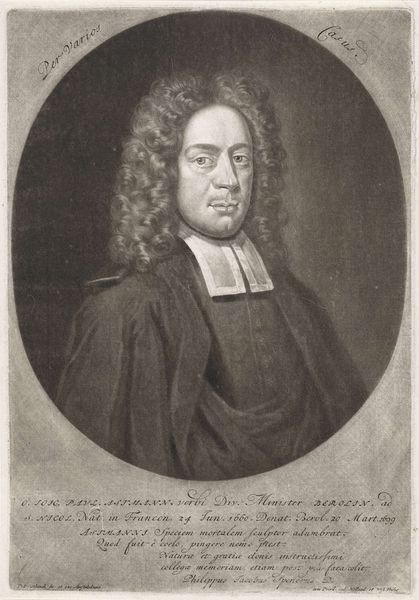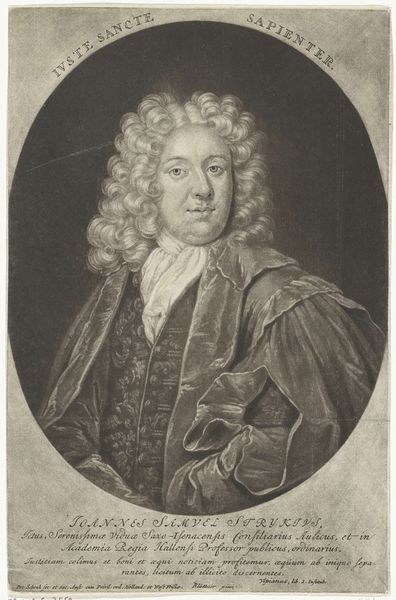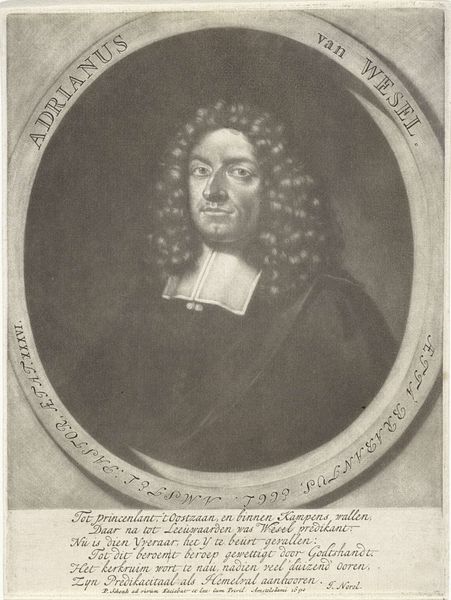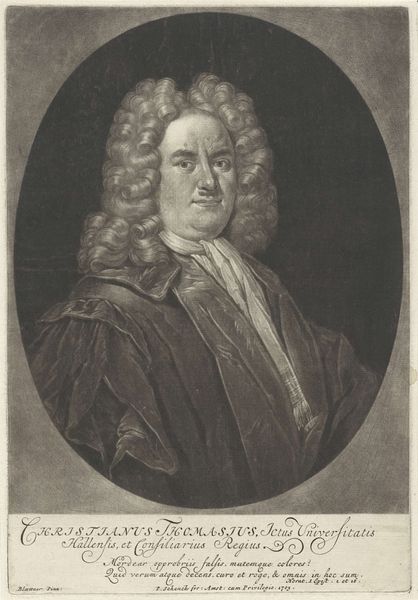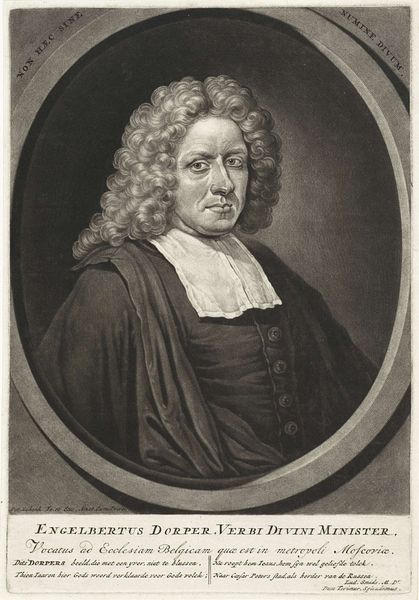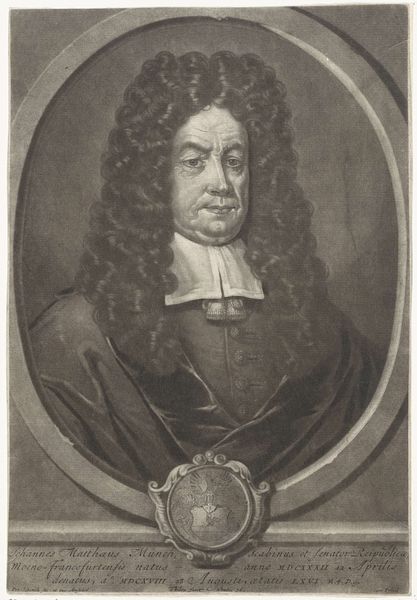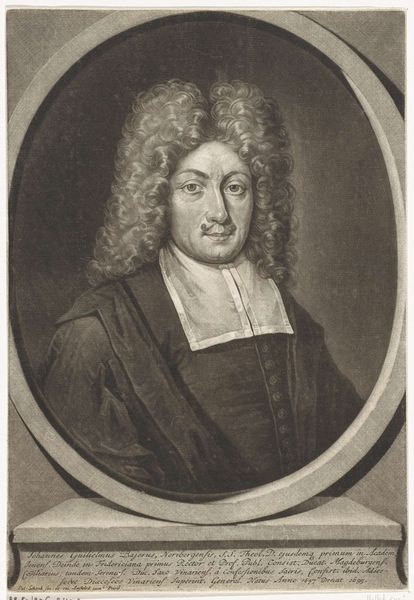
#
wedding photograph
#
photo restoration
#
portrait image
#
portrait reference
#
framed image
#
portrait drawing
#
portrait art
#
fine art portrait
#
celebrity portrait
#
digital portrait
Dimensions: height 288 mm, width 212 mm
Copyright: Rijks Museum: Open Domain
Curator: Welcome. Here we have a piece entitled, *Portret van de theoloog Henricus Sacheverell,* by Pieter Schenk, created around 1710. It's currently held here at the Rijksmuseum. Editor: My immediate impression is one of formality and the weight of social expectations, which feels amplified by the sheer volume of wig! The lines are incredibly smooth and even, hinting at meticulous printmaking. Curator: Absolutely. The wig isn't just a fashion statement; it's a symbol of status, intellect, and belonging within a very particular societal structure. It also points us to how persona could be constructed and conveyed visually at that time. Editor: And the quality! Think about the materials involved – the paper, the ink, the tools used to etch the plate. Consider the labour to create such details, each line precisely placed to construct texture, form, and identity. Curator: Indeed. Look closely at the oval frame surrounding Sacheverell. Ovals were often used for portraits, signifying elegance and a kind of refined timelessness. It suggests not just an individual, but a figure for posterity. What feelings are being communicated? Editor: More than feelings perhaps, I see presentation – Sacheverell's velvet cloak draped just so speaks to calculated self-fashioning. These garments weren't cheap and printing such portrait would be luxury for only small circle. Curator: True. And consider Sacheverell himself. He was a controversial figure, a high-church Tory known for his fiery sermons. So, the portrait may be a political statement or commentary during era where divisions along lines church vs. the state were contentious. Editor: It's fascinating how what seems like a straightforward portrait opens up so many questions about production, identity, and the circulation of images within the class system. It prompts us to rethink assumptions about accessibility, then, as now, to control public image. Curator: Indeed. These types of symbolic elements act almost as embedded code for those in the know at the time. Considering portrait through historical symbolism and socioeconomic systems in its design really enhances our view beyond simply appreciating aesthetics!
Comments
No comments
Be the first to comment and join the conversation on the ultimate creative platform.
